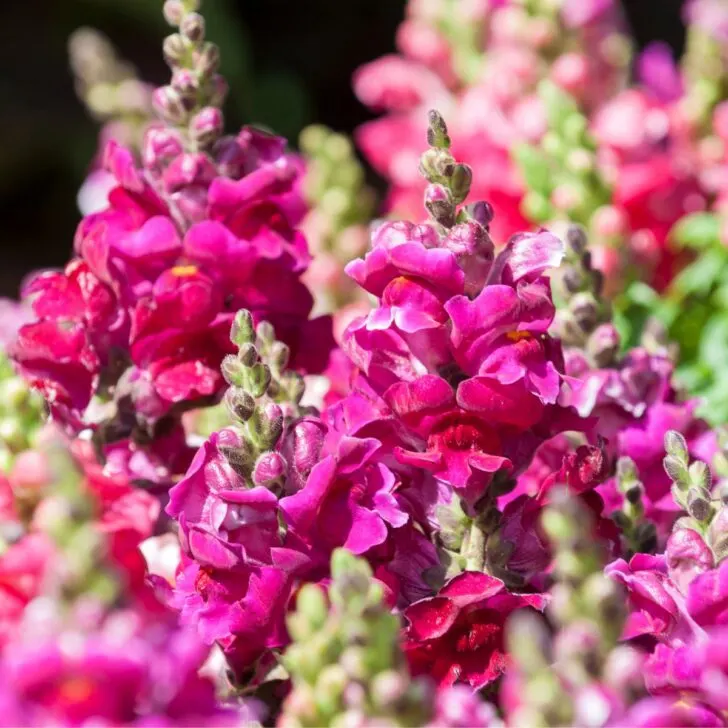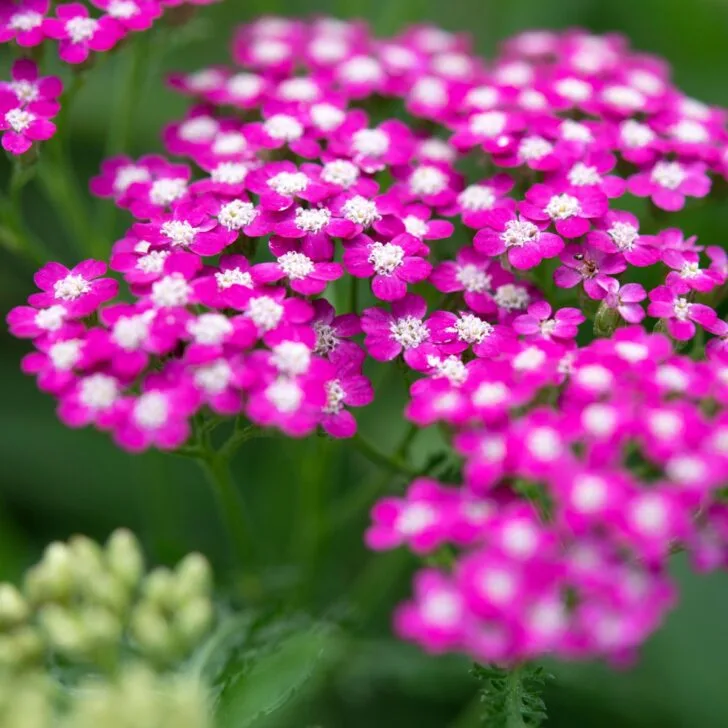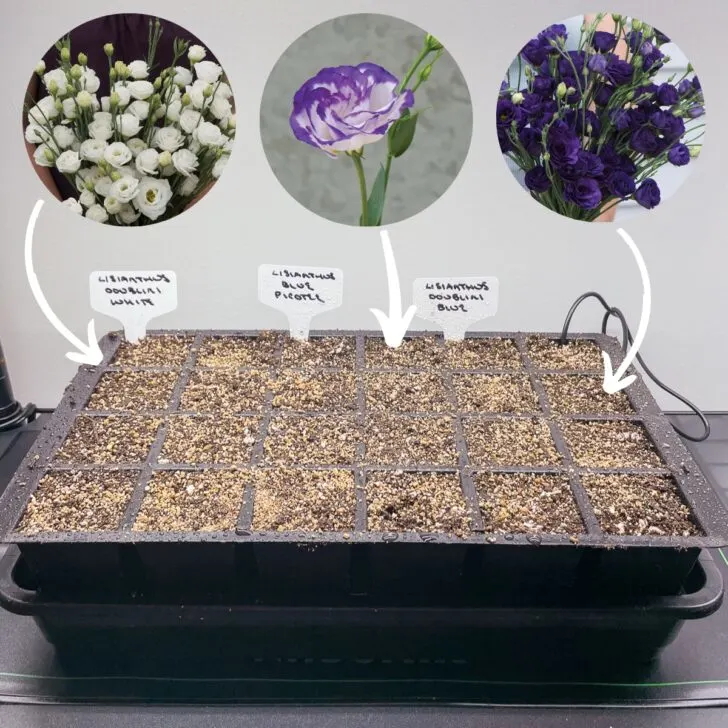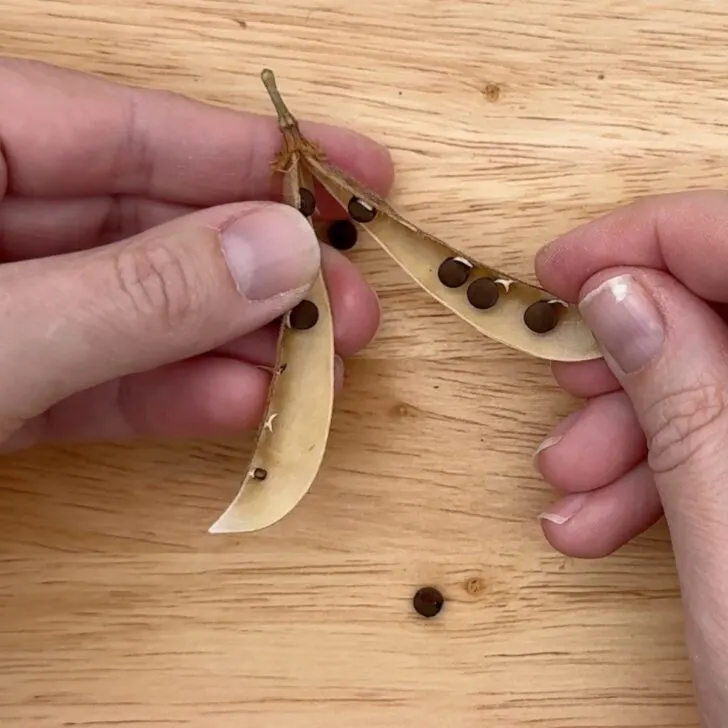Sweet peas are a fragrant, dainty flower that has become a staple in the cottage garden. Learn how to grow sweet peas from seed here!
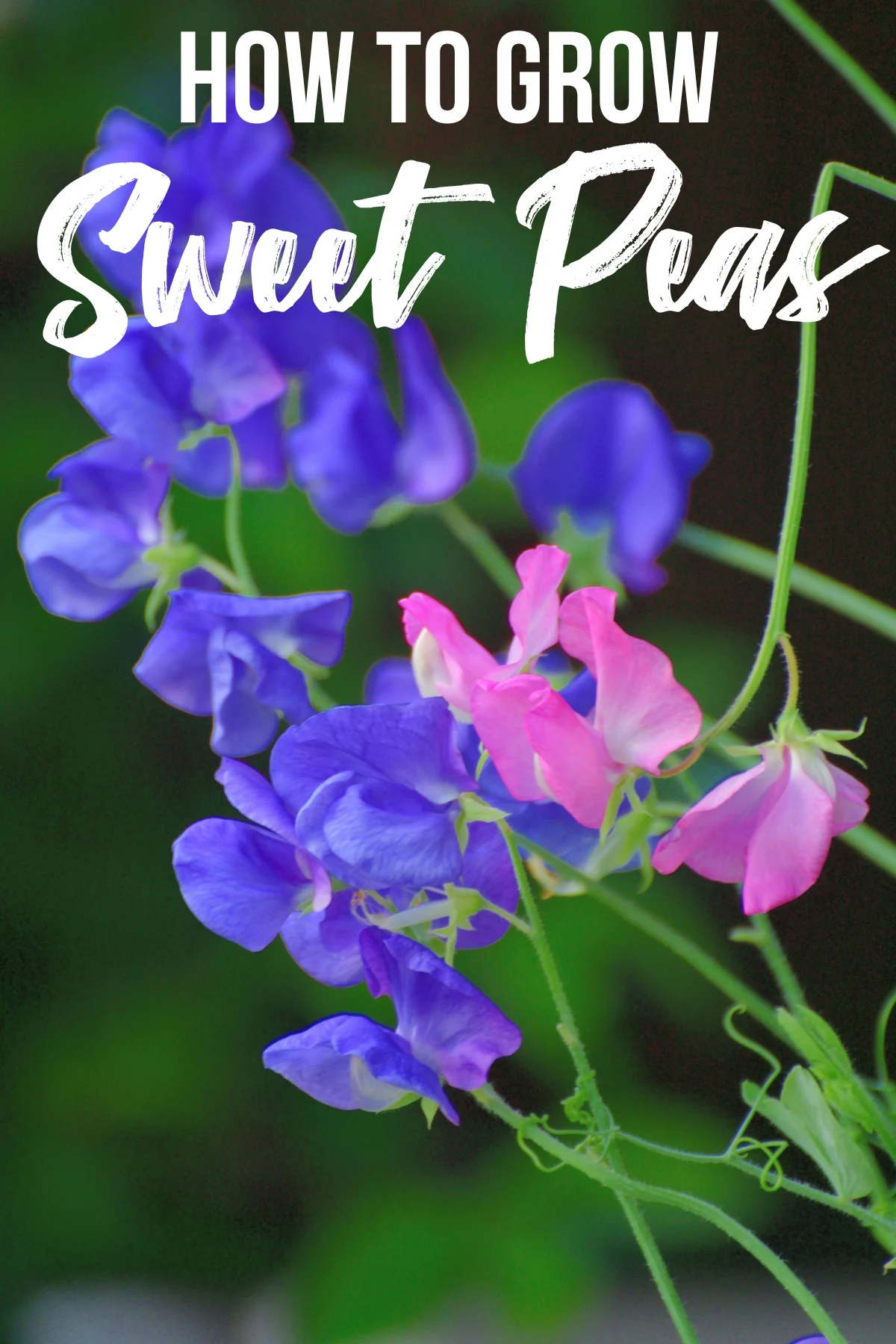
Sweet pea plants produce an abundance of colorful, fragrant flowers to brighten your garden. These frost-tolerant vines are easy to grow and thrive in the cool days of early spring when most other annual plants are waiting for warmer weather.
Sweet pea plants quickly mature to a height of 4 to 6 feet, and they need a trellis or other structure to climb and show off their blossoms. Peak bloom times are from early May through June, although I've had them flower all the way through September!

Don’t confuse this plant (Lathyrus odoratus) with edible types of garden peas (Pisum sativum), such as sugar snap, Chinese, and snow peas. The flowers and pods of sweet peas are mildly toxic, so enjoy them as ornamentals and don’t eat them.
This post contains affiliate links for your convenience. Purchases made through these links may earn me a small commission at no additional cost to you.
Sweet pea cultivars
Sweet pea plants have an astounding variety of flower colors, including pure white, shades of pink, crimson red, navy blue, lavender, and dark purple. Consider planting multiple cultivars together for an orchestra of color and fragrance.
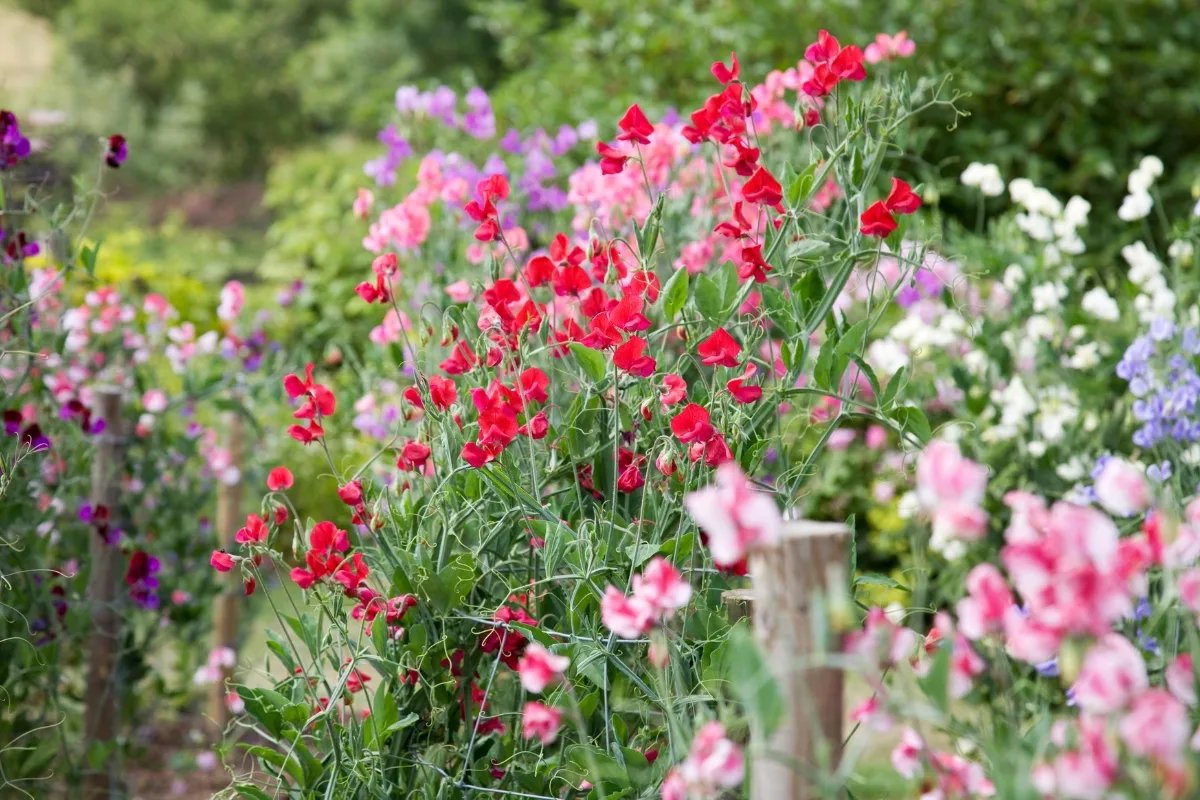
This year, I'm starting these varieties from seed:
- 'Chocolate Flake' - a brownish red and white streaked flower.
- 'Lizbeth' - a bright salmon pink flower with long stems.
- 'Erewhon' - a reverse bicolor flower with dark purple inside and light pink outside petals.
- 'Daily Mail' - large, bright pink blooms.
- 'Azureus' - an unscented sweet pea with darker blue flowers.
- 'Mr. P' - dark purple petals with white streaks.
- 'Blue Ripple' - a later blooming Spencer series flower with purple and blue flowers.
- 'Enchante' - a large tricolor bloom with rose, cream and lavender petals.
Most sweet pea varieties are annuals. However, there are a few perennial sweet peas in the species Lathyrus latifolius, also called ‘Everlasting Pea.’ These re-grow from the roots for multiple years, but the blossoms do not have as much scent as the annuals.
What do sweet pea seeds look like?
Sweet pea seeds are large and round with a dark brown hard outer casing. You may see a white or light brown line across the seed where the seedling will sprout. They're easy to handle and plant in the garden or in a seed tray.
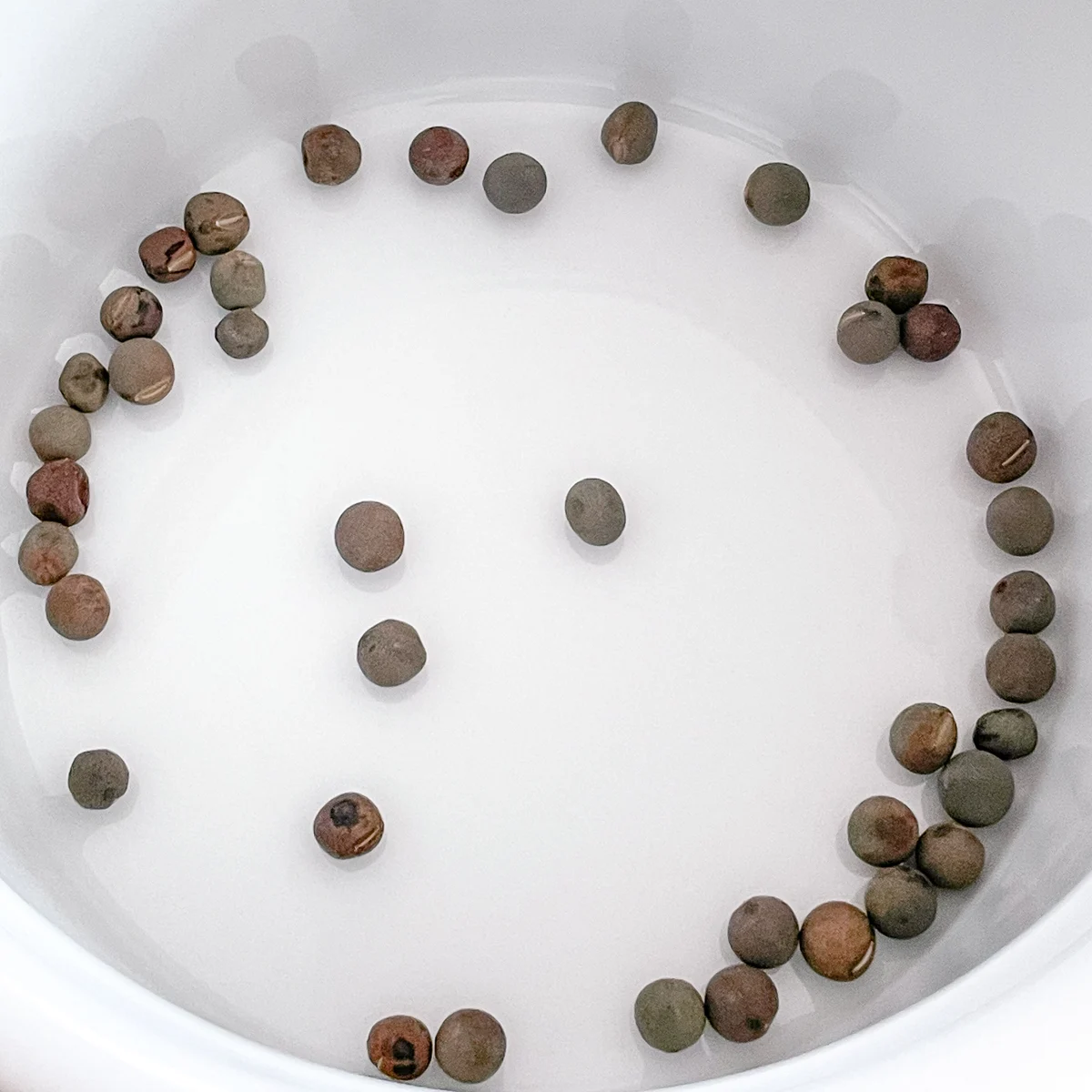
How to grow sweet peas from seed indoors
Starting sweet peas indoors is the best way of ensuring successful germination. Start the seeds about six weeks before transplanting them outdoors in early spring.
Soak the seeds first
The hard outer coating on sweet pea seeds can be tough for the seedling to break through. To speed up germination, soak your seeds in water for 24 hours at room temperature. This softens them up and starts the sprouting process.
I'm starting eight different varieties this year, so I poured 10-12 seeds into separate plastic cups and left them on the counter for a day. Make sure to label the cups or keep them organized with their seed packets so you know which one is which!
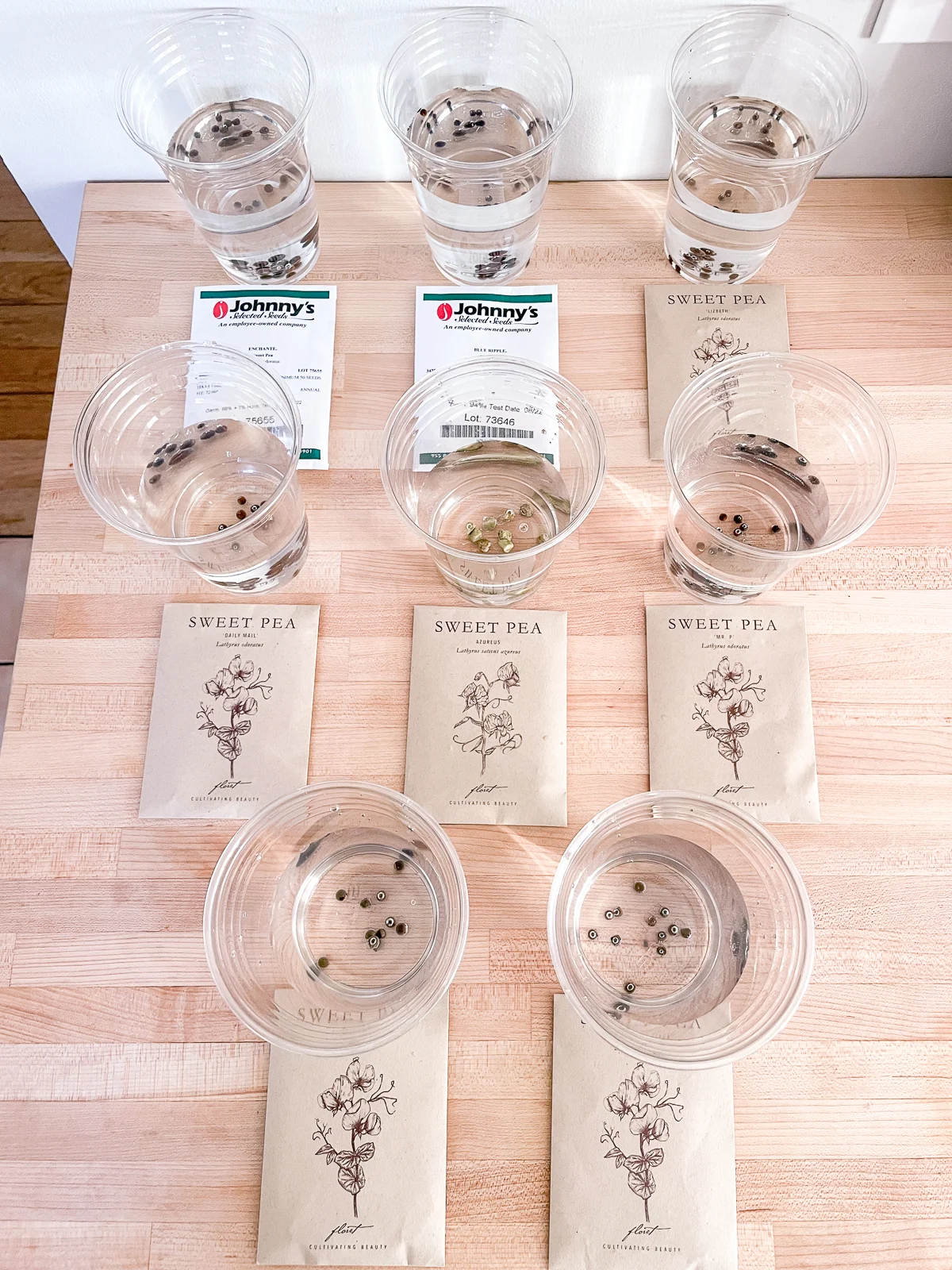
Use root trainer seed trays
Sweet peas grow long roots very quickly, and they don't like those roots to be disturbed when transplanted. Small seed trays don't give these plants enough room to grow healthy root systems, so you should opt for root trainer seed trays or individual 3-4" pots instead.
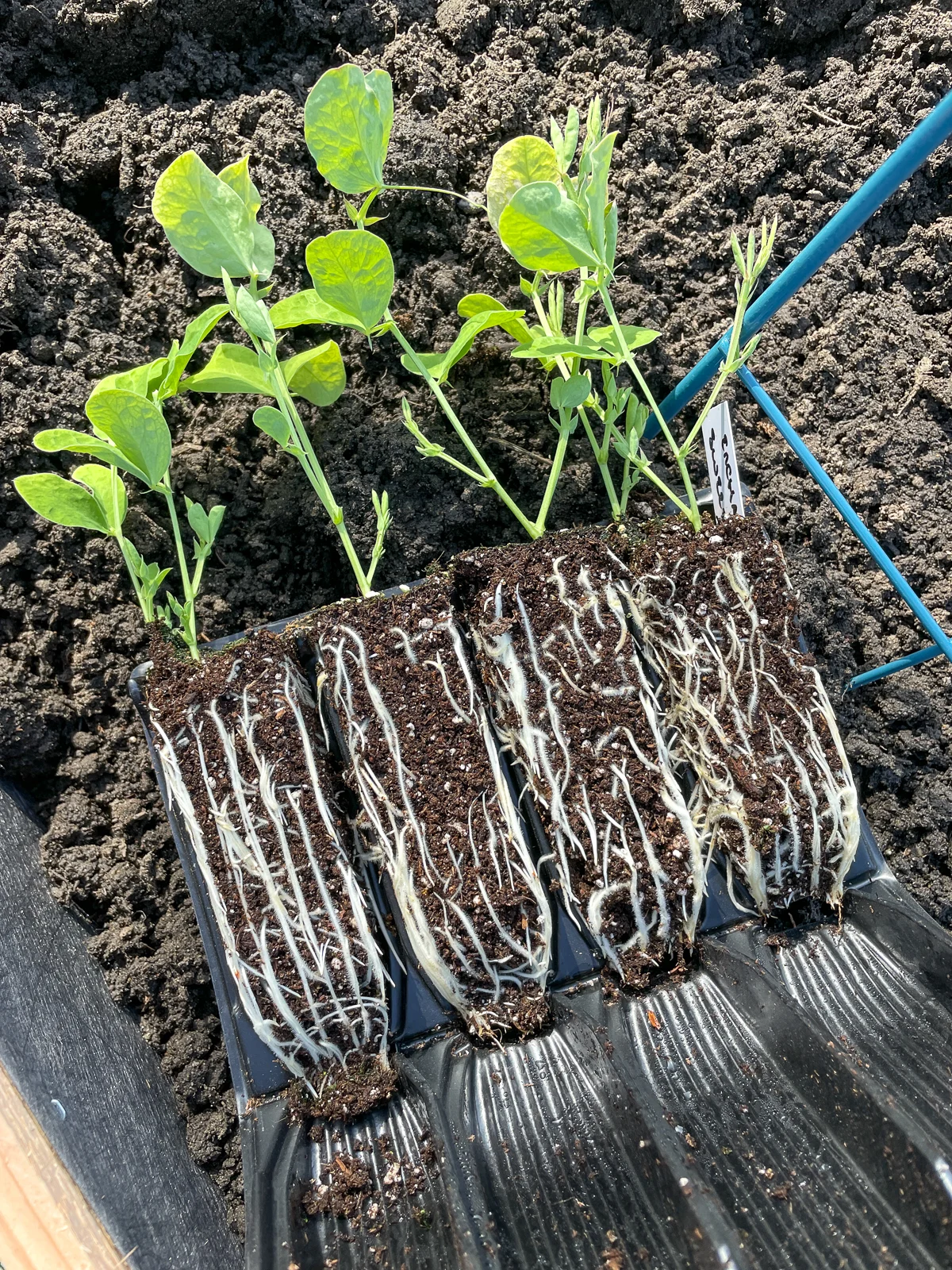
I'm using these 5" deep root trainer trays that hinge open at the bottom. This allows the sweet pea seedlings to grow longer roots, and can be easily lifted out when it's time to plant them in the garden.
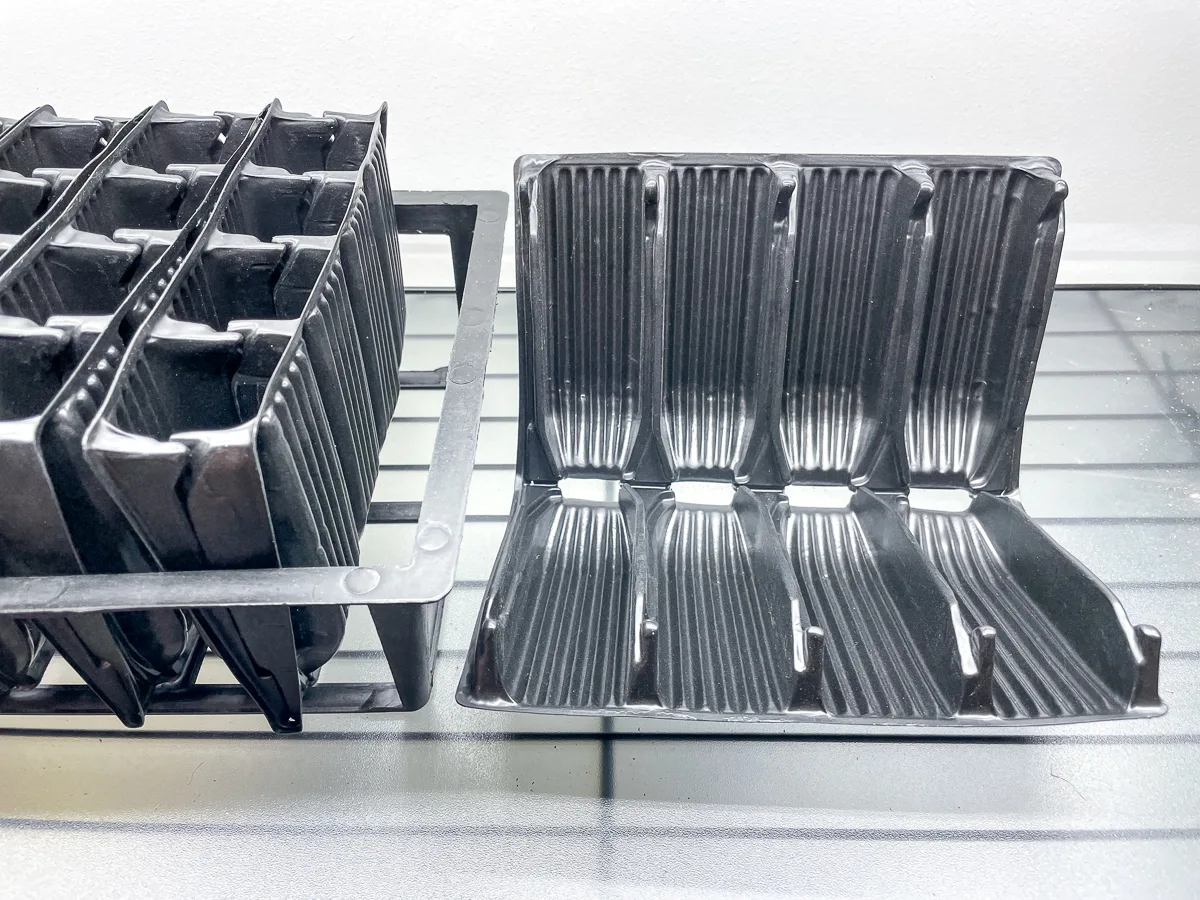
Fill each cell with premoistened seed starting mix, and press down on the top to eliminate air pockets. Make sure to label each row if you're not planting all one type. I have eight varieties of sweet pea seeds, and there are eight rows in the tray, so it worked out perfectly!

Sort out any nonviable sweet pea seeds
After the sweet pea seeds finish soaking for 24 hours, you'll notice that most of them have swelled up and formed a crack. Some are even starting to sprout!
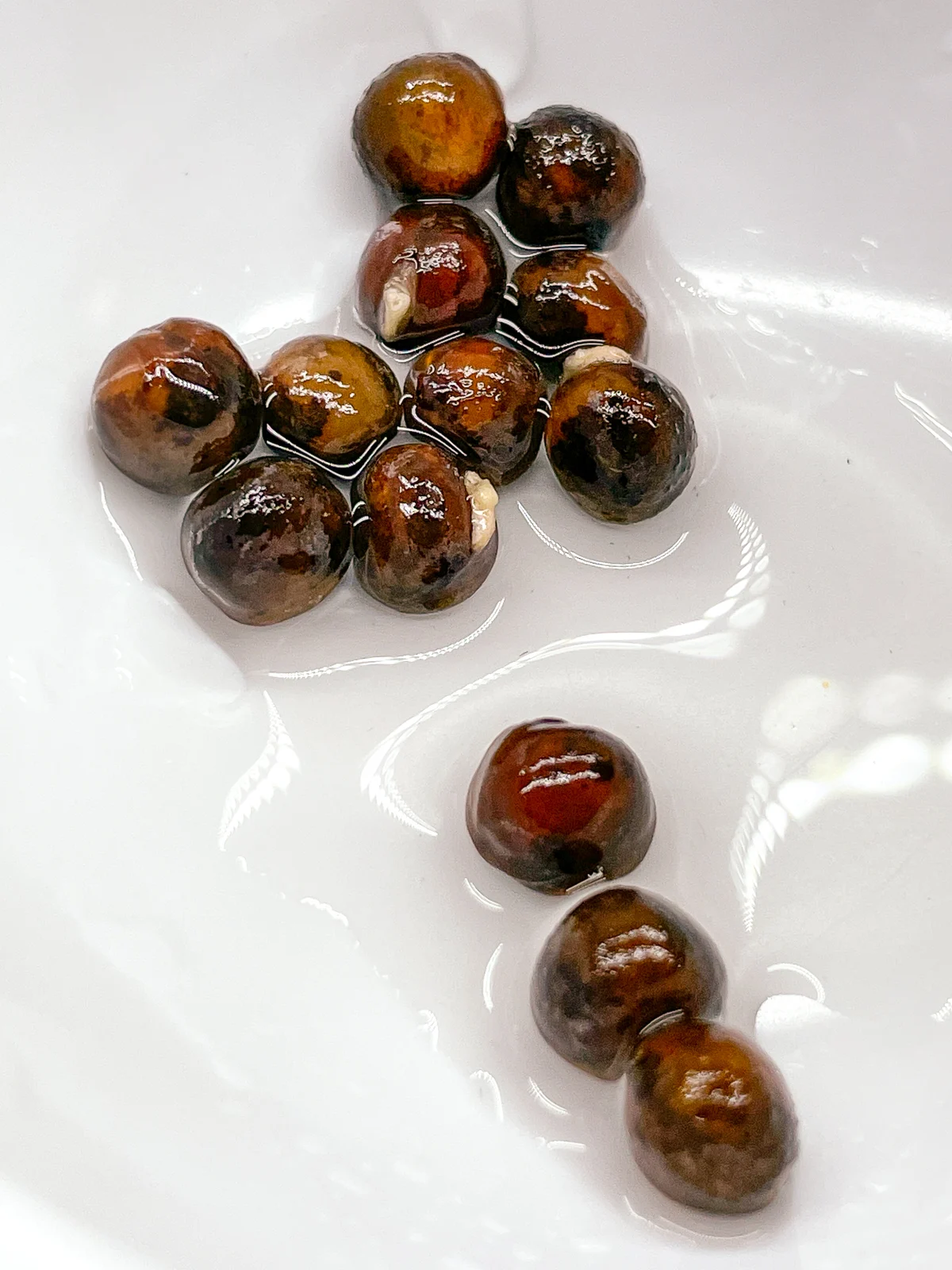
I like to soak a few more seeds than I'll need, so I can filter out the ones that may not be viable. You can see the difference between a seed that absorbed water and is forming a crack, and one that looks just like it did before I put it in water.
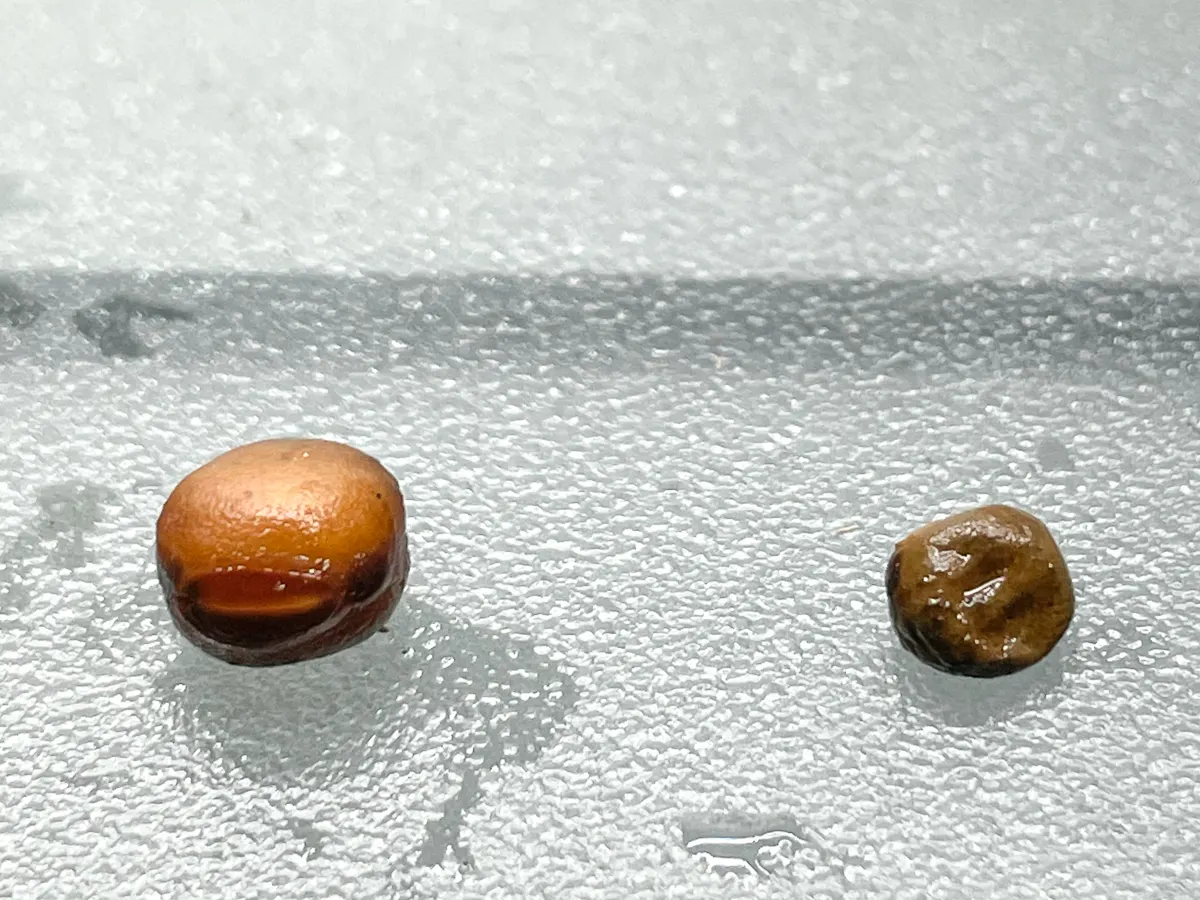
Plant your sweet pea seeds
Make two ½" deep holes in each cell of your seed tray. I marked the most common seed depths on this wooden dibber so I know how far down to plant. You could just use a pencil and press down to the metal end of the eraser.
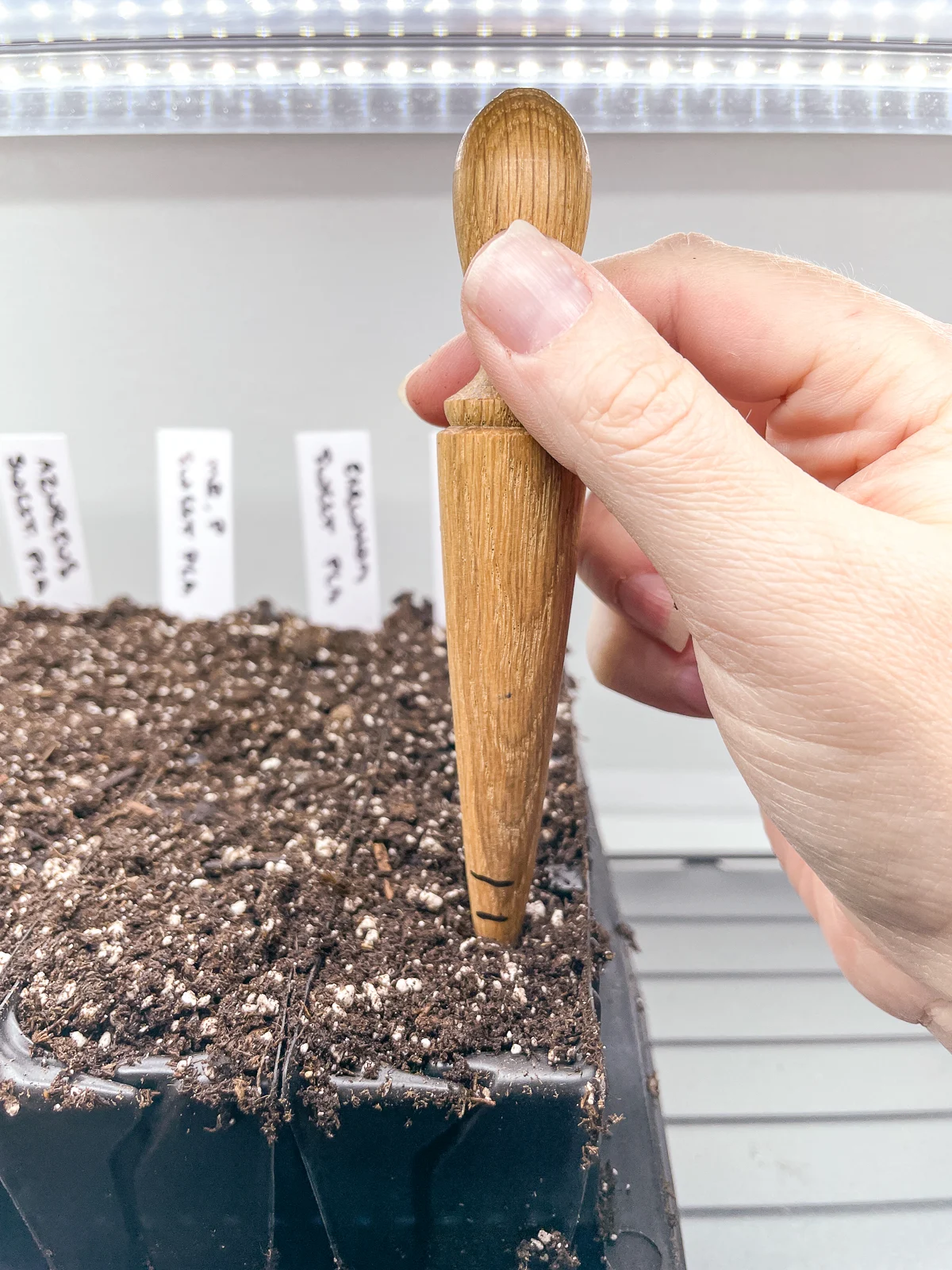
Pop one seed into each hole, then cover them up with soil. Sweet pea seeds need darkness to germinate.
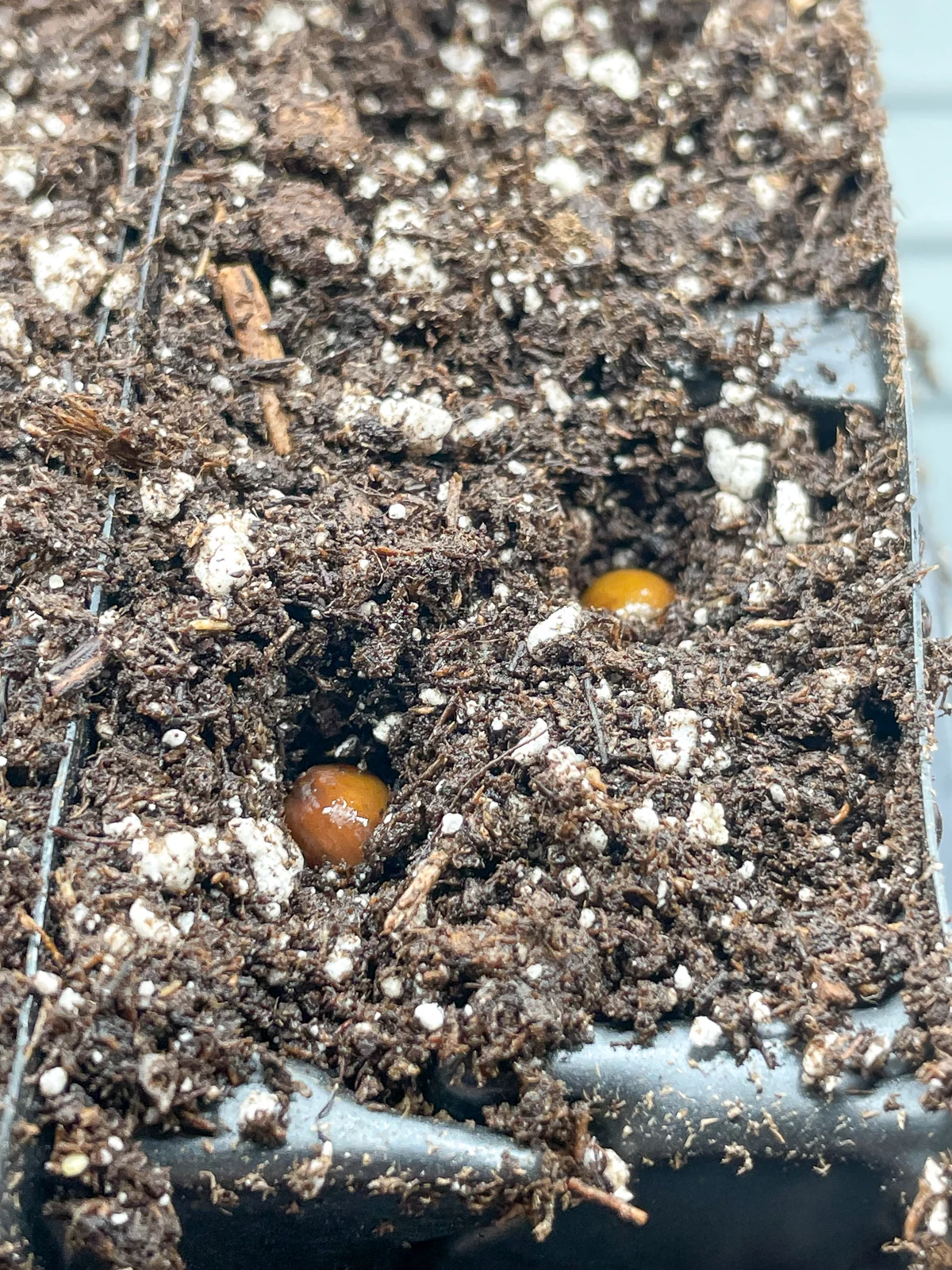
Use a spray bottle to water the seeds without disturbing them. Keep the soil moist but not soggy at temperatures between 50 and 65°F. A humidity dome helps to prevent the soil from drying out.

Germination takes two to three weeks, although soaking the seeds helps speed up the process. Once you see the seedlings pop up, remove the humidity dome and provide them with light for 16 hours a day.
How to direct sow sweet peas outside
If you don’t have a suitable place to start sweet pea seeds indoors, you can sow them directly into the garden. However, the germination rate is likely to be lower, and birds or insects might destroy some seedlings. Nonetheless, direct sowing can be a successful way to start sweet peas.
Plant the seeds directly into a sunny location in well-prepared soil six weeks before the last average frost date. Put the seeds ½-inch deep in the ground and 1 to 2 inches apart in rows. When the seedlings develop true leaves, thin them to about one foot apart.
How to care for sweet pea seedlings
After patiently waiting and watering, your seedlings finally emerge! Once they get going, they grow fairly quickly. Here are a few things to do to keep them happy!
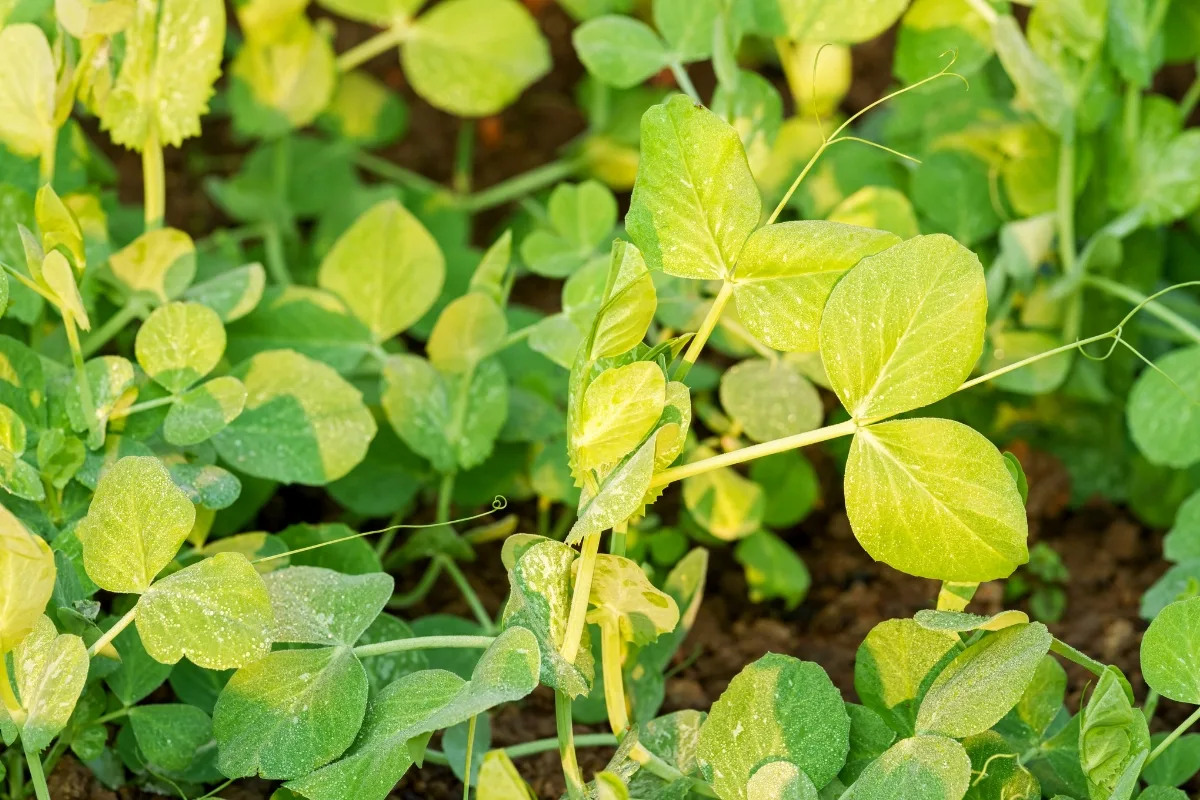
Thin to one plant per cell
Once the first set of true leaves emerge, you can thin them out to one plant per cell, leaving the strongest seedling to continue growing. You can transplant the thinned out plants to separate containers, or you can just pluck them out and discard them.
While thinning out seedlings may seem wasteful and kinda harsh, it's better for the plants overall. They don't have to compete with resources, such as nutrients, light and water, so they can grow stronger and provide you with more blooms!
Fertilize your seedlings
After thinning, you can start fertilizing your seedlings. Seed starting mix doesn't have any nutrients, so the seed itself has provided everything the plant needs up until now. I use a quarter teaspoon of this liquid fertilizer mixed in a half gallon spray bottle once a week.
Pinch your sweet pea seedlings
When your sweet peas are six to eight inches tall, it's time to pinch them. I have a full tutorial on how to pinch sweet peas, and you can see what they look like after pinching. It's always hard to cut off all that growth, but it will produce more branches and more flowers!
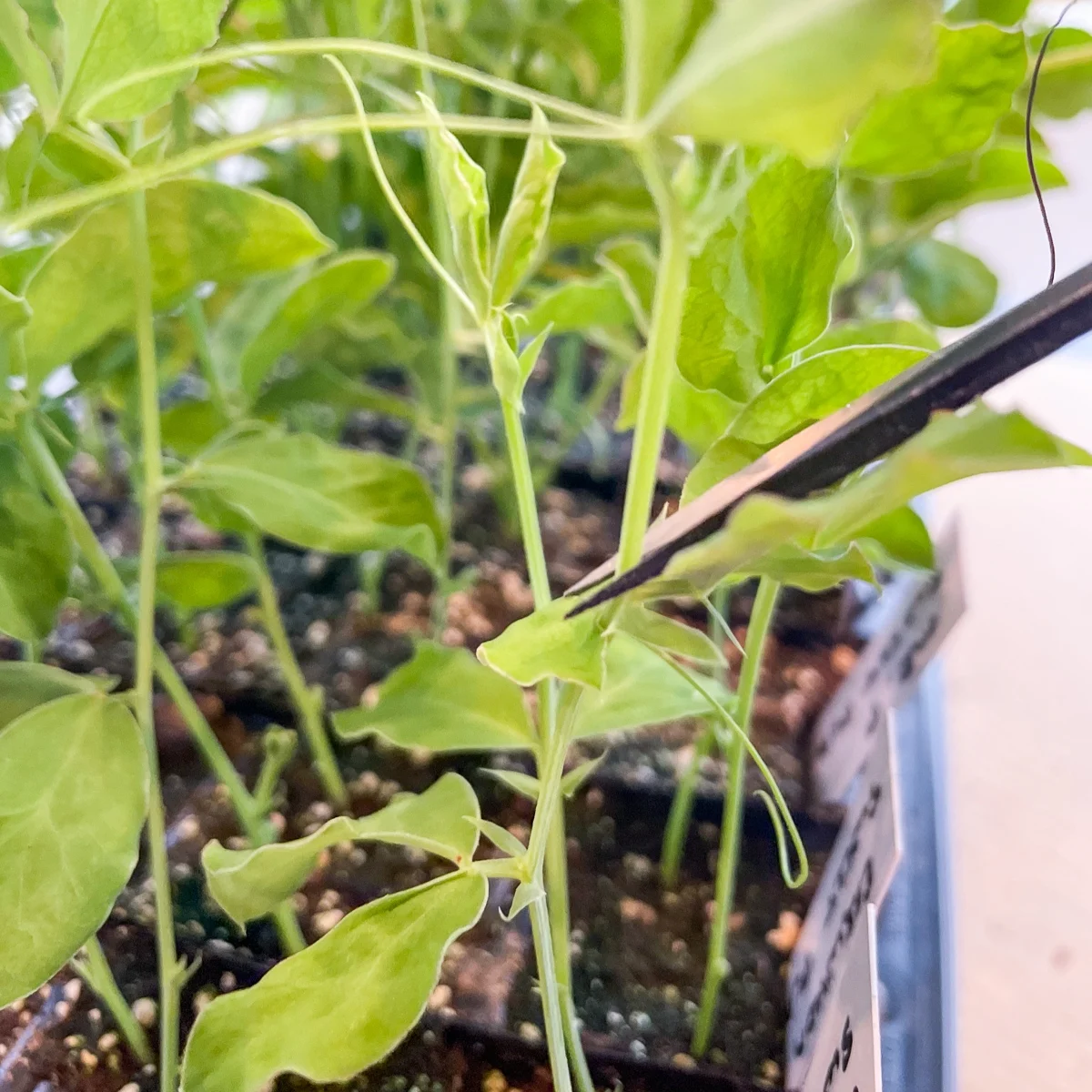
Hardening off your seedlings
To help sweet pea seedlings transition to growing outdoors, harden them off first. This means taking the seed trays outside into dappled light during the day and bringing them back in at night, so they start getting used to the temperature, sun exposure and wind of the great outdoors.
Repeat this process for at least a week before planting them in the garden. Here's how to transplant your sweet pea seedlings outside!

